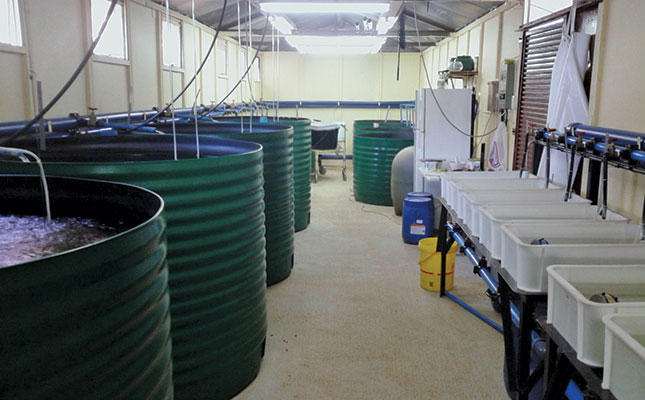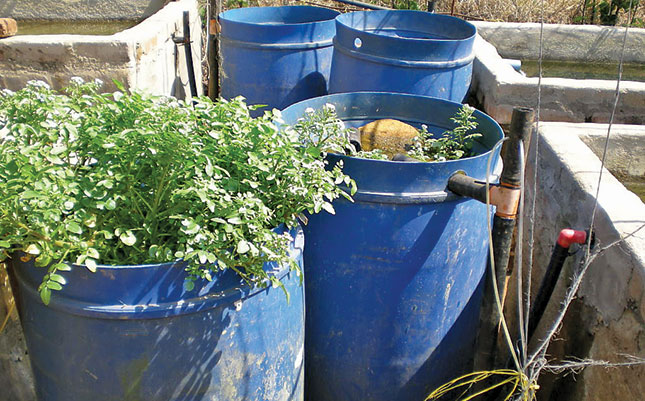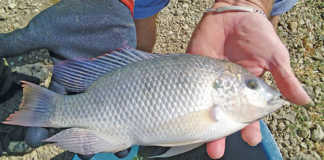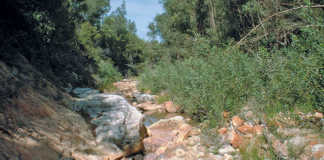
Photo: Nicolas James
Farmers with unused buildings or dams frequently enquire whether these can be used for aquaculture.
It is always tempting to use concrete dams, old pig pens or water containments for some form of fish farming. Unfortunately, wrongly designed fish grow-out tanks and filtration plants have been responsible for more fish farm failures than almost all the other reasons put together.
Using old structures such as pig pens is not a good idea.
The main problem is that they have concrete bottoms that are not correctly sloped and therefore will not self-clean.
Also, they are invariably on a flat concrete floor and too deep, so it’s difficult to construct recessed filtration that can be drained into by gravity.
If you’re thinking of using an indoor construction, remember that water heating can be a problem. Warmwater species such as tilapia need water temperatures of 25°C to 30°C for growth.

This is done most efficiently by the sun, and greenhouses are by far the most effective way of raising the temperature of large volumes of water.
Indoors, solar heating through a transparent roof of polycarbonate can be a solution. On the farm, we have a large building with a clear roof, and it does get extremely hot.
Large windows on opposite sides of the building can be opened when the heat is excessive. This, however, is a purpose-built building and the cost of re-roofing, plus redesigning the grow-out tanks and so on makes it debatable whether a conversion like this is cheaper than a purpose-built tunnel-based structure.
Unused dams on the farm
Many landowners have big concrete dams. As these are often filled via a windmill or submersible pump from a borehole, could they not be used for fish? In a word, no.
They form ideal reservoirs for holding large volumes of water, but they are entirely unsuitable for growing fish to edible size. At most, you are likely to end up with a few dozen undersized fish.
Concrete dams or large lattice-frame tanks are usually flat-bottomed. The faeces will build up rapidly to form a toxic layer that will soon bubble off hydrogen sulphide gas and kill the fish. It puzzles me that many people fail to understand that fish also feed and produce waste, just as a cow does.
A herd of cows would not survive long in a kraal if it were not cleaned out. Even if the tank walls hold enough beneficial bacteria to do some water cleaning, this is not enough for the water in which fish are fed.
A bottom sloping to a central drain would help, and this should then flow by gravity (not pumped!) to a filter sunk into the ground.
There is no substitute for structures that are correctly designed for the purpose, and ‘cost-saving’ and shortcuts rarely work properly.
Nicholas James is an ichthyologist and hatchery owner.













